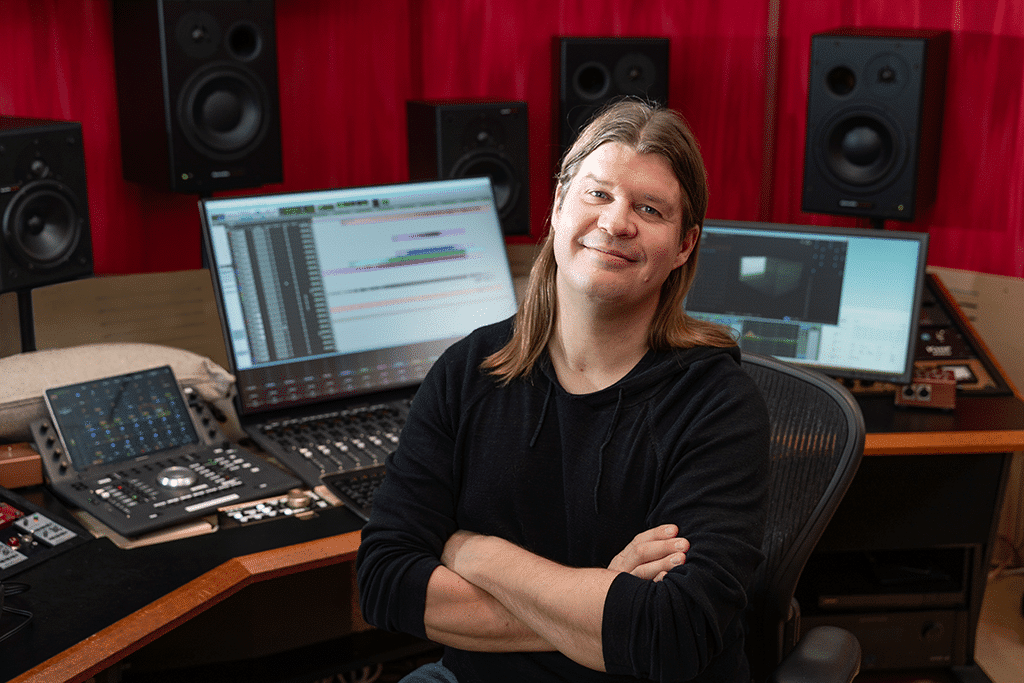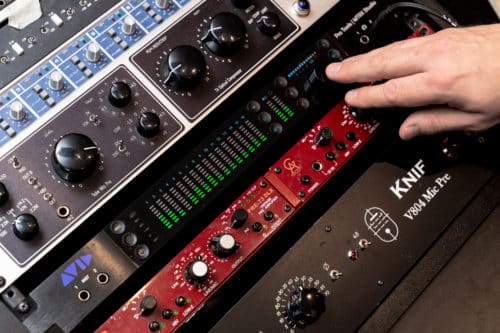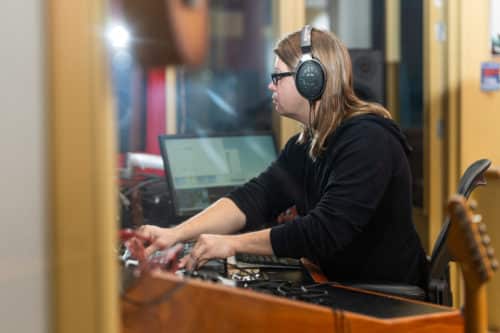Located in the industrial part of the Vallila district in Helsinki, Finland, Studio Kekkonen is a pitstop for hundreds of notable local and international music and film score releases. It’s a collective run by three established engineers—Mikko Raita, Julius Mauranen, and Janne Riionheimo—whose passion for music production, recording, and mixing has earned them accolades and the respect of clients and peers worldwide.
The 97th Academy Awards, held in March 2025, were especially meaningful for Mikko Raita, whose work was recognized in two categories. Flow won the Oscar for Best Animated Feature and was also nominated for Best International Feature Film. The film’s striking score—composed by director Gints Zilbalodis and Rihards Zalupe—was mixed by none other than Mikko himself.
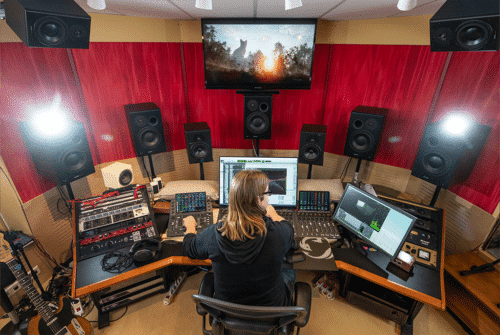
Mikko has recently worked on other standout productions as well. His contribution to titles such as 2024’s most-watched film in the Nordics, Stormskerry Maja (directed by Tiina Lymi, music by Lauri Porra), Netflix’s Little Siberia (directed by Dome Karukoski, music by Panu Aaltio), and Ääniä (Finland’s official soundscape, composed by Lauri Porra), is an achievement worth a closer look into the tools and techniques of the man himself.
Read on as Mikko shares how his studio setup has evolved to support world-class immersive mixing—and offers details on the workflows behind it.
Refining Monitoring and Control – the MTRX Studio and EUCON
The MTRX Studio is now the nerve center of my studio. I’m extremely impressed with its super-customizable monitoring and routing matrix and the possibilities it offers, especially when paired with the DADman software. I acquired the MTRX Studio together with the lovely DAD MOM remote to work alongside my old Avid HD I/O and to replace my previous XMON and D-Command monitor controllers.
Before this upgrade, I was pushing the XMON far beyond its design specs by utilizing it for up to 9.1.2 Atmos premix monitoring. However, using the separate cue headphone outputs to control extra outputs beyond the officially supported 5.1/7.1 main output path—and having to constantly repurpose and re-patch outputs for recording sessions—was not the best use of my time in the studio.
When I finally upgraded my monitoring to a proper 9.1.6 speaker system based on Dynaudio monitors, it was time to update the monitoring system as well. The MTRX Studio fit the bill perfectly. It provides the required 16 channels of SPQ speaker EQ, trims, delays, and bass management, and still leaves room for a nearfield stereo pair output and the front panel headphone outs, which I use daily.
One significant motivator for upgrading to the MTRX Studio and full 9.1.6 monitoring was to be able to reference released Dolby Atmos content more easily.
Since I’ve maxed out the 18 analog outputs for monitoring, I’m also using the built-in ADAT outputs to feed an external Apogee DA16X converter to get additional analog outputs for cue feeds into the recording room. In the future, I could upgrade this to a Dante-based foldback setup, which the MTRX Studio would handle equally well.
More recently, I upgraded from the D-Command to a EUCON-based controller setup, and it has really enhanced my workflows and boosted creativity. I love the compact layout of three Avid S1 units, one Avid Dock, and two Samsung Galaxy Tab 9 FE tablets. For the two S1s in the middle, I’m using the Avid Control Desktop app instead of tablets. This lets me lower my main 2560×1600 screen just above the controller surface, which improves ergonomics and gives better clearance for the center speaker. What I get with EUCON and its more economic profile is a less colored sound overall compared with the D-Command in place.
Making the Most of HDX and MTRX Studio
In my current setup, I use a Pro Tools HDX system with two Avid HDX cards. The first card is connected to the MTRX Studio and provides 64 I/O for Pro Tools. The second HDX card currently handles 32 channels—half of them connected to my old HD I/O, and the rest to Apogee converters. The Apogees are also connected directly to the MTRX Studio via ADAT, so I can switch them depending on the task: either to expand monitoring and foldback outputs from the MTRX Studio, or to serve as general-purpose AD/DA for Pro Tools sessions.
 For most of my day-to-day work, a single HDX card and the MTRX Studio would actually give me enough I/O. But I still want the option to use 16 delay-compensated hardware inserts via the HD I/O wired to my TT patchbay. I’ve kept some rack compressors ready to go, along with a Neve-style Vintagedesign SU-1 summing amp. I also have an EMT 140 plate reverb and the Knif Joiku tube spring reverb—both absolutely lovely and worth keeping on hand.
For most of my day-to-day work, a single HDX card and the MTRX Studio would actually give me enough I/O. But I still want the option to use 16 delay-compensated hardware inserts via the HD I/O wired to my TT patchbay. I’ve kept some rack compressors ready to go, along with a Neve-style Vintagedesign SU-1 summing amp. I also have an EMT 140 plate reverb and the Knif Joiku tube spring reverb—both absolutely lovely and worth keeping on hand.
Before switching to the MTRX Studio, I had to constantly re-patch things depending on the task. The same I/O paths would be used for recording, analog outboard mixing, or surround and Atmos monitoring. That’s a lot of manual analog re-patching! Now, most of the hardware connections remain fixed, and I handle all the necessary routing virtually inside the MTRX Studio matrix using DADman, which can be saved as presets. It’s great to have these additional dedicated I/Os always available through the older converters.
This setup has brought a new level of efficiency to my workflows and sped up moving between projects. Switching between different types of sessions and their intricate routings doesn’t waste mental energy anymore, and I can focus more on the creative work.
Mixing Big: Hybrid Engine in Action
I originally expanded my Pro Tools Ultimate setup to a two-card HDX system so I could handle large film score mix sessions with hundreds of tracks. But since the introduction of the Pro Tools Hybrid Engine, I’ve been using its all-native processing workflow—even on sessions that previously would have required multiple linked HDX rigs.
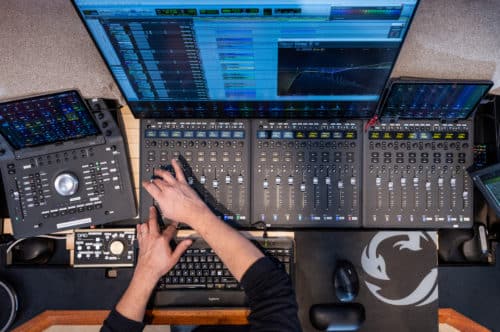 One such example is the massive Stormskerry Maja film score mix session, where I used a full “master session” workflow with all multitracks and elements of the music in a single Pro Tools session. It ended up running 1,300 mono voices at 96 kHz sample rate—quite a feat on its own—and was mixed into three Dolby Atmos-compatible stems in 9.1.6 width. The mix used Pro Tools’ new expanded width internal busses, with dedicated 9.1.6 reverbs and other processing on each stem separately.
One such example is the massive Stormskerry Maja film score mix session, where I used a full “master session” workflow with all multitracks and elements of the music in a single Pro Tools session. It ended up running 1,300 mono voices at 96 kHz sample rate—quite a feat on its own—and was mixed into three Dolby Atmos-compatible stems in 9.1.6 width. The mix used Pro Tools’ new expanded width internal busses, with dedicated 9.1.6 reverbs and other processing on each stem separately.
At a glance, one might think my HDX cards are now relegated to being just fancy DigiLink I/O adapters—and for mix sessions, that’s relatively true. But when I’m recording at Studio Kekkonen, the DSP on those cards still plays a key role. I can track through AAX DSP plugins on record-enabled tracks with basically zero latency, and I don’t need to worry about playback buffer settings or other timing issues.
The greatest benefit of tracking through plugins in the monitor chain of record tracks is that they remain editable. I can leave them ‘as is’ into the session—even up to the mixing phase. I prefer this method rather than committing to a hardware processed sound. Most of the time I treat the AAX DSP plugins as a part of the recording, but since the plugins convert to native AAX if I switch to an all-native workflow, I still retain the flexibility to tweak settings or even replace the processing altogether later on. I have found this very helpful on numerous occasions.
Referencing, Rendering, and Real-World Atmos
One significant motivator for upgrading to the MTRX Studio and full 9.1.6 monitoring was to be able to reference released Dolby Atmos content more easily. The flexible input options—whether via Dante, ADAT optical, or analog conversion—have proven extremely useful for getting consumer Atmos signals into the studio’s monitor path.
For this, I currently use the analog input method. I route the output of an Emotiva XMC-2 AV preamp with 16 XLR line-level outputs straight into the MTRX Studio via my patchbay. The XMC-2 decodes Atmos and 5.1 content from an NVidia Shield TV Pro, a Blu-ray player, or even my Windows desktop via HDMI. With the pristine converters on the MTRX Studio, the analog round trip isn’t an issue at all. As a bonus, the Emotiva also serves as a compact HDMI switcher to a part of my studio monitors.
This consumer reference system is in regular use. I currently subscribe to Tidal, Apple Music, Netflix, Max, Apple TV+, Prime Video, and Disney+—all for referencing streaming Atmos content. I also check how Atmos in Windows PC games translates on the studio speakers, and monitor Windows desktop audio directly through the same monitoring setup.
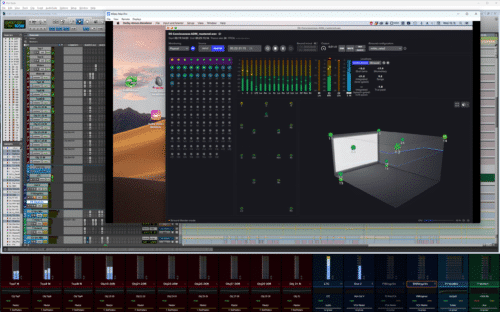
When I first started using the MTRX Studio, I used its Dante capabilities along with Dante Virtual Soundcard (DVS) as a “bridge” between my main Windows mix machine and an old Mac Pro 5.1. The Mac Pro ran a standalone Dolby Atmos Renderer setup with 64 input channels as a “mini-RMU”. These days, I mostly rely on the Pro Tools Internal Renderer workflow by default. I find it straightforward and efficient, and mature enough to be a daily driver. I now use DVS not for bridging to another machine, but to reference ADM masters alongside my mix. DVS acts as the soundcard for the standalone Dolby Atmos Renderer available as an alternative input in DADman.
Due to the large numbers of audio channels available between Pro Tools and the MTRX Studio, I have also set up an alternate 9.1.6 monitoring path directly from Pro Tools, along with a dedicated stereo downmix/headphones path. This lets me easily compare previously rendered mix versions to the current live mix session. I can even sync up an ADM file inside the standalone Renderer—or an exported DD+JOC MP4 consumer reference version played on Windows desktop—and switch between all four 9.1.6 sources to compare how each version translates. I can also record streaming Atmos content directly to Pro Tools.
I’m also considering installing the Thunderbolt expansion card in the MTRX Studio, since my main studio PC now includes a TB port. This would open up even more routing possibilities.
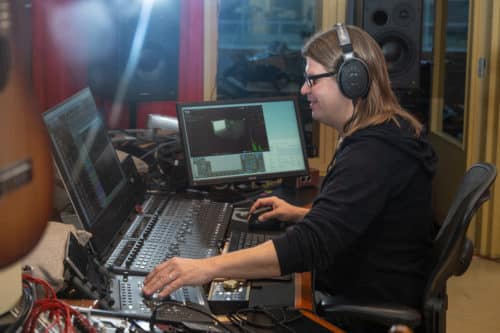
This multiple monitor path functionality was leveraged a lot on the Flow score mix, as I was mixing the score simultaneously in Atmos, 7.1 and stereo. I started it as a 9.1.6 based Atmos mix, but later into the production I received info that the film mix would be in 7.1. So, I built out internal stem routing paths in Pro Tools but retained the Atmos mix as well. The Atmos version was still used actively during production to provide remote referencing Dolby Binaural and Apple Spatial Audio previews for the composers. There’s still a chance the Atmos score mix will get released at some point—but for now, the official soundtrack album is available in stereo only.
Moving to a Modern EUCON Workflow
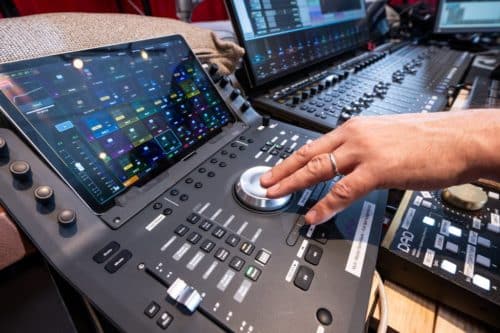
I decided to switch from the old D-Command to a EUCON-based controller setup to get access to modern workflows—like the Folder-based controller features in Pro Tools. My previous controller workflows for large mixes were based on a setup of 24 or more VCA tracks in Pro Tools, and I knew the new system had to support the same. This is why three S1 controllers was the perfect setup around which to base the system.
The speed and flexibility of Folders, Spill modes, and tactile plugin control made a huge difference in helping keep the work flowing in a fast-paced mix.
At first, I wondered if I’d even use the Dock, but now I definitely could not live without it. Now, the ultra-fast jog wheel session navigation, the programmable Soft Key strips, and the dedicated Transport controls are all a must for me. I considered programming transport to S1 Soft Keys, but with the Dock in place, the Soft Keys now have better uses like Solo Clear, Suspend Groups, and Open/Close Folder.
I’ve set up my EUCON system to default to Avid Control’s Tracks view, where I only display VCAs and Folder tracks. This lets me continue my familiar VCA-based workflow with fast Spill access to member tracks, while also taking full advantage of Basic / Routing Folders and Folder Spilling (where Spill mode shows the member tracks of any VCA Group or Folder on the faders). I still prefer VCAs for most group volume automation—especially since I typically want those level changes to happen pre-reverb sends. To keep things familiar and have only VCAs on the faders, I also replicated the “VCAs only” mixing mode from my old D-Command by creating a “master” VCA track that allows me to spill the other VCAs grouped under it.
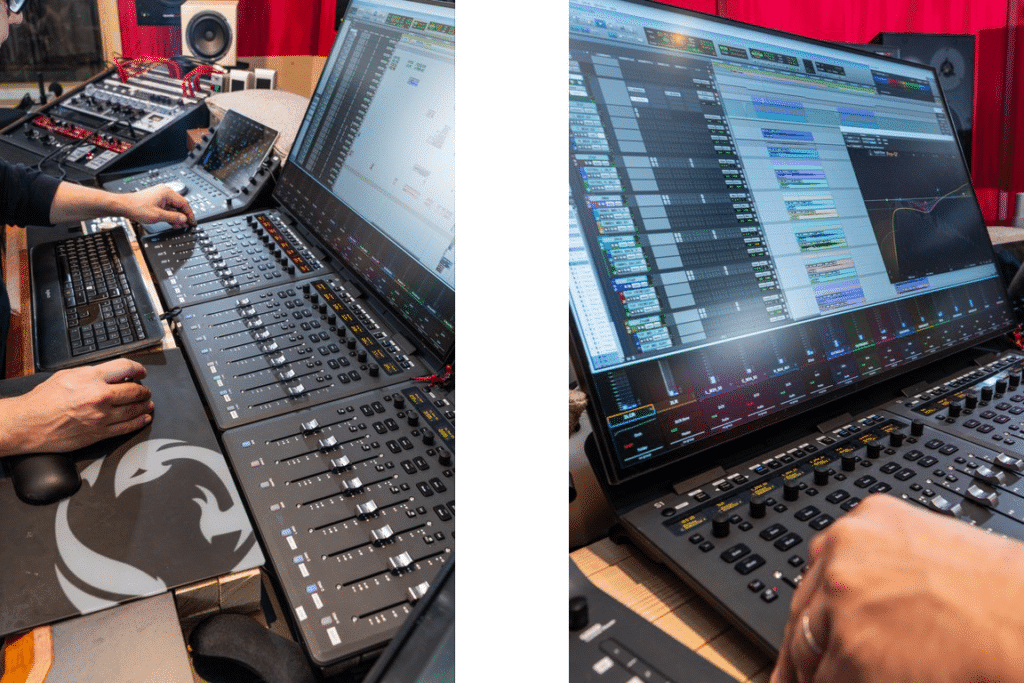
Back on the D-Command, I had more or less given up on using plugin controls, because most of my go-to EQ and dynamics plugins didn’t map comfortably to the dedicated knob sections. But now, with EUCON Plugin Custom Mapping mode, I regularly use the FabFilter Pro-Q4—including its dynamic EQ functions—directly on the S1 knobs. As a result, I have also noticed an improvement in ergonomics due to less time on the keyboard and mouse.
I’ve also started color coding tracks much more frequently—thanks to a Soft Key I programmed for that purpose. Pro Tools’ new Routing Color Coding has become a big help too, especially in more complex session layouts.
While the Flow score was actually mixed on the old D-Command, one of the first major projects where I really got to stretch out with the new EUCON system was Little Siberia, a Netflix film scored by Panu Aaltio. It was a very detailed and wide-ranging mix, blending synthetic textures with layers of live instruments—including folk instruments like jouhikko and nyckelharpa—and a large amount of overdubbed percussion. The speed and flexibility of Folders, Spill modes, and tactile plugin control made a huge difference in helping keep the work flowing in a fast-paced mix.
Mikko Raita’s Work Highlights
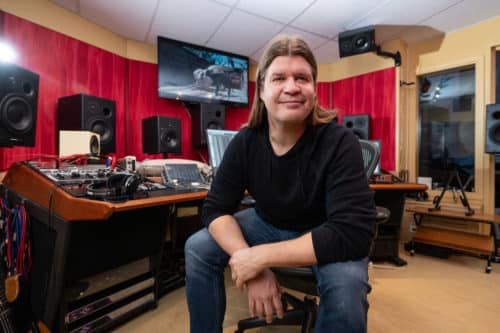 Mikko Raita’s recording and mixing work can be heard in dozens of film and TV productions. These include the 2025 Best Animated Feature Oscar winner Flow, which also received a Special Mention from the Best Sound Creation Award from La Semaine Du Son at Cannes and over 70 other international awards. The list continues with Netflix’s Little Siberia, the Hollywood film 5000 Blankets, and Stormskerry Maja, which won Best Music at Finland’s Oscar equivalent Jussi Awards. He has worked on hundreds of music albums, and currently specializes in all kinds of immersive projects. Mikko particularly enjoys projects where Dolby Atmos can be taken into account already at the recording and production stage, allowing for both stereo and Atmos mixes to be done simultaneously.
Mikko Raita’s recording and mixing work can be heard in dozens of film and TV productions. These include the 2025 Best Animated Feature Oscar winner Flow, which also received a Special Mention from the Best Sound Creation Award from La Semaine Du Son at Cannes and over 70 other international awards. The list continues with Netflix’s Little Siberia, the Hollywood film 5000 Blankets, and Stormskerry Maja, which won Best Music at Finland’s Oscar equivalent Jussi Awards. He has worked on hundreds of music albums, and currently specializes in all kinds of immersive projects. Mikko particularly enjoys projects where Dolby Atmos can be taken into account already at the recording and production stage, allowing for both stereo and Atmos mixes to be done simultaneously.
With the 2018 release of the film Happier Times, Grump, Mikko became the first music engineer in Finland to have his work released in Dolby Atmos. In addition to Stormskerry Maja, his Atmos film music works include The Nature Symphony, Man and a Junior, and The Renovation.
In 2022, Mikko also recorded and mixed the first full Atmos Music album released in Finland: Lions We Are by Dantchev:Domain. His recent Atmos Music album work includes composer Lauri Porra’s Matter and Time with the Vantaa Orchestra and Stephen Fry, Porra’s Stormskerry Maja and Queen of Fucking Everything soundtracks, part of conductor Dalia Stasevska’s Dalia’s Mixtape album with the BBC Symphony Orchestra, Aki Rissanen’s Hyperreal, Alexi Tuomarila’s Departing the Wasteland, Ninni Poijärvi’s Ikimetsä, Esa Helasvuo’s EbA, Ida Alanen Trio’s Awake Asleep, and tracks with Celestial Aeon Project, composers Jonne Valtonen (Purple Motion) and Arthur Troch (Stele), as well as tracks with folk music stars Maija Kauhanen, Maria Kalaniemi, and Frigg.
Read more on Mikko Raita’s website and view Mikko Raita’s credits at IMDb!
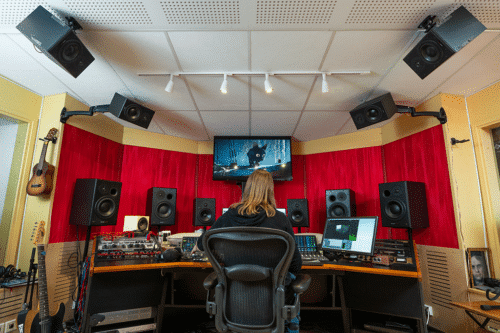
Photos by Sakari Röyskö

